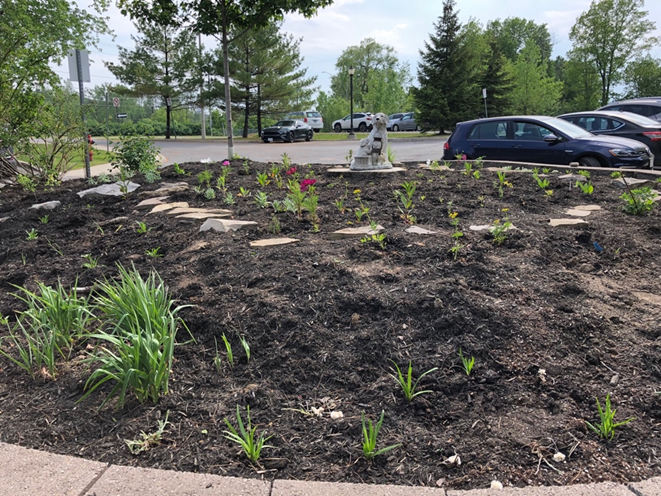Ontario Horticultural Association grantsThe OHA is an organization dedicated to “Keeping Ontario Beautiful.” With over 270 horticultural societies/garden clubs and over 26,000 affiliated members throughout the province, the association, also known as Garden Ontario, is a force to be reckoned with.Each year, the OHA provides grants to its member societies and clubs, through an application process, to assist them in beautifying their communities. Grants can be awarded in the following categories: trees, pollinator garden, special project/environmental, youth, community garden, or “seedy Saturday/Sunday.” In 2021, a special project grant was awarded to the Gloucester Horticultural Society. This is their story. |
The COVID pandemic was devastating for long-term care homes, and the Madonna long-term care home, was particularly hard hit by the virus. The newly rebuilt home is located in the Greenbelt on Montreal Road on the way to our meeting place.
With agreement from the home and a grant from the Ontario Horticultural Association, the Gloucester Horticultural Society (GHS) planned and planted a native flower garden in a raised bed at the front entrance of the home.
The space was large, 20 by 30 feet, and contained nothing but a young maple tree and two rose bushes. The home is located in Ottawa’s Greenbelt on former farmland, so it was felt that habitat restoration would be beneficial and the GHS approved additional funding for that purpose.
The objective was to phase in a pollinator friendly garden, eventually consisting of only native shrubs and perennials. The GHS wanted to design the garden to reflect the original beauty of the land, providing habitat for insects and pollinators and, by extension, birds. It was to be a cheerful oasis for staff, visitors, and most of all residents, many of whom rest by the garden plot or look out on it from their windows.

Thanks to Laurie we received quite a load of free pieces of flagstone. Here Laurie and Maria are getting ready to make an access path across the garden bed.
In spring, a careful inventory was taken to ensure that plants to which the residents were attached would be retained. A colourful garden bed with a changing selection of native perennials, hopefully buzzing with bee activity, would create an attraction and entertainment for residents. Residents would also have the opportunity to grow some annuals from seed and help with planting around the perimeter of the bed. Another thought was to leave some of the young plants in their care until they were ready to be planted outside.
In total, about 280 plants were planted in the raised bed, providing a spectacular show of colours for residents and visitors as well as food for dozens, if not hundreds, of pollinators in its first year.
The GHS volunteered its skills in terms of designing, planting, watering, weeding, and pruning as required. Members contributed native perennials and annuals from their own gardens as well as some flagstone stepping stones.
“We believe that, as a horticultural society, our job today includes tasks of conservation/restoration and environmental protection, adding as much biodiversity to our gardens as possible. In the UN Decade of Ecosystem Restoration, the plantings should be in the spirit of restoring ecological biodiversity wherever we can.”

The native plant plugs were mainly ordered from Connaught Organic Farm and Nursery in Cobden, whose owners, Grant and Dorothy Dobson provided us with a full tray of about 50 plant plugs for free! This photo was taken at the end of May 2021.
This project took many countless hours of volunteer work by GHS members with funding from the Ontario Horticultural Association. The GHS is especially grateful to Maria Sievers, who was the driving force behind the project.
The vision of the project was realized in the summer of 2021, working with nature and a concern for the environment to stand as a lasting memorial to the residents and staff who lost their lives during this most difficult time.

